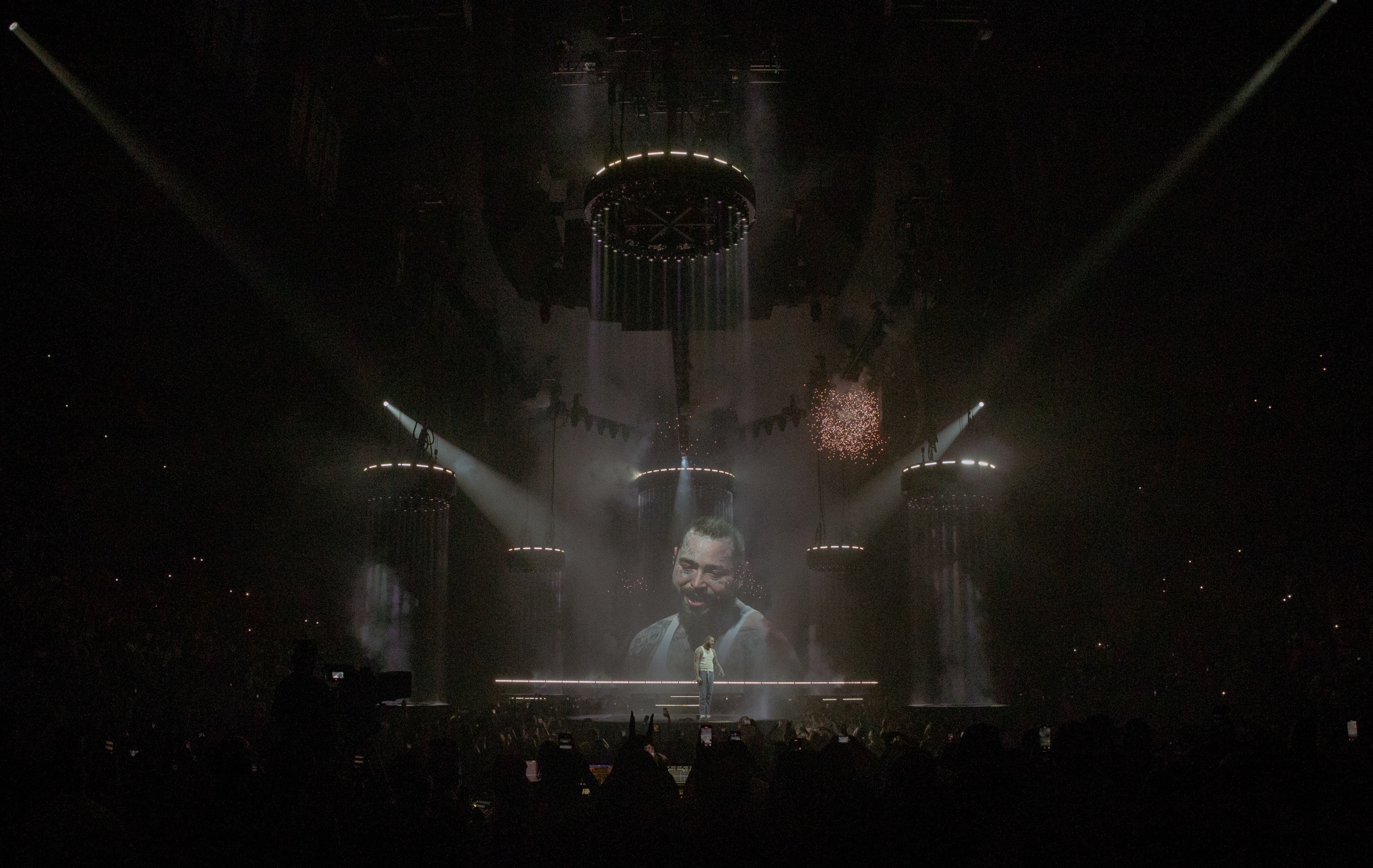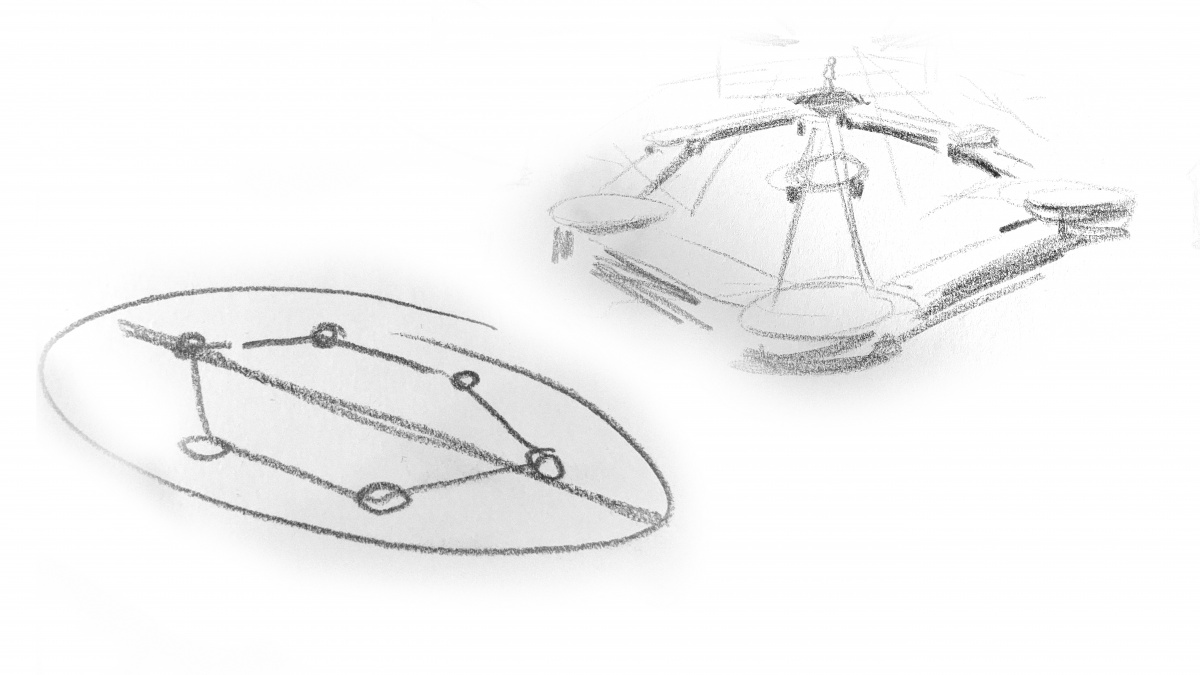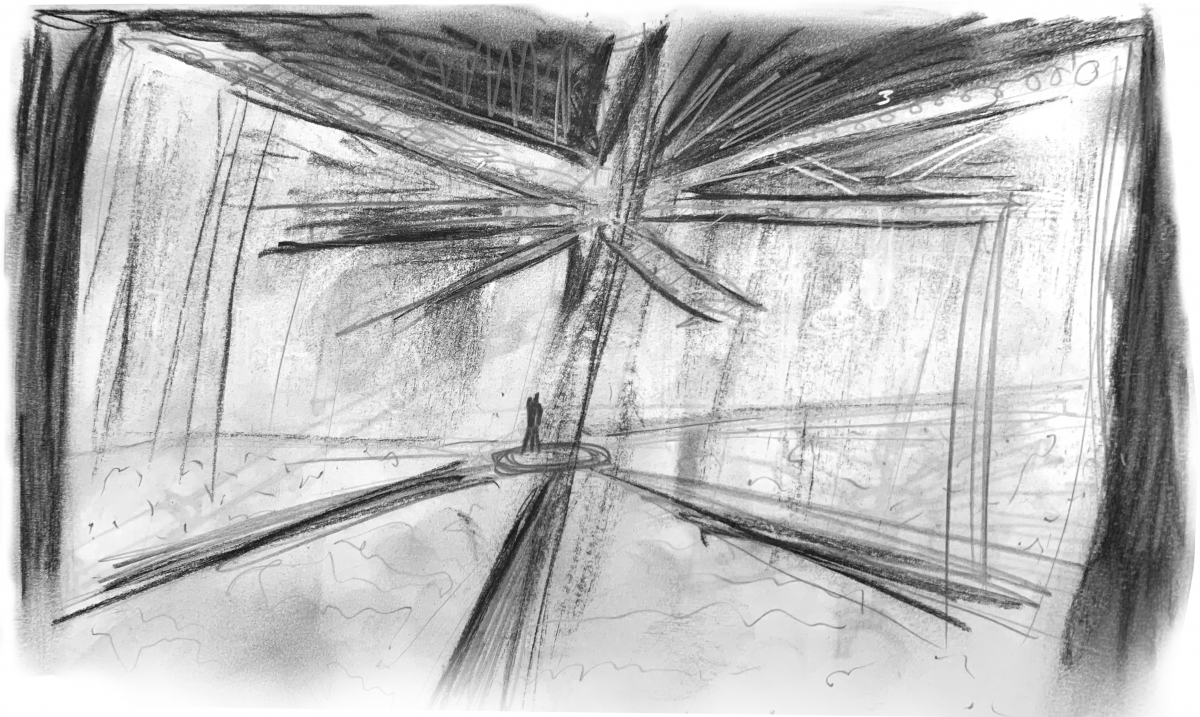Lewis James is a stage designer and creative director for Post Malone. He most recently designed the set of Post’s The Twelve Carat Tour.
How did you manage to have your first major project be with Drake? That’s crazy.
Lewis James: It was a bit of a weird snowball, but the first big production I worked on was with Drake, and that was through meeting people on the Internet.
I came from a small town in the southwest of England. My parents didn’t really do anything creative. My influence for a lot of the music and visual world came from MTV. I was fascinated by the Gorillaz, Jamiroquai, and Jonathan Glazer videos. I loved that connection between visual and audio, and it all stemmed from there.
When I was 10 I went to the local film school in the town center. They had a film club where you could, on the weekends, make a film and show it next week. It was really cool. When I left my hometown when I was 17 I went to London to a school called Central Saint Martin’s, which is a really cool art school; it opened my mind to the more spatial side of design. While I was in school I was already working with smaller artists and not really doing the coursework but doing my own stuff.
I developed a group of friends on Instagram who were already in the industry. Mike Carson did a lot of Big Sean’s creative direction and had a bunch of ties in the rap industry at that time. Through Instagram we met up—we actually went to a Rihanna concert together in London. He was my introduction to working with bigger artists. [Mike] was working on a Drake tour and brought me under his wing to design bits, and it sort of snowballed from there really. Once you’re in the world of touring it’s quite easy to meet other artists on tour and develop relationships. The internet really helped with my career.
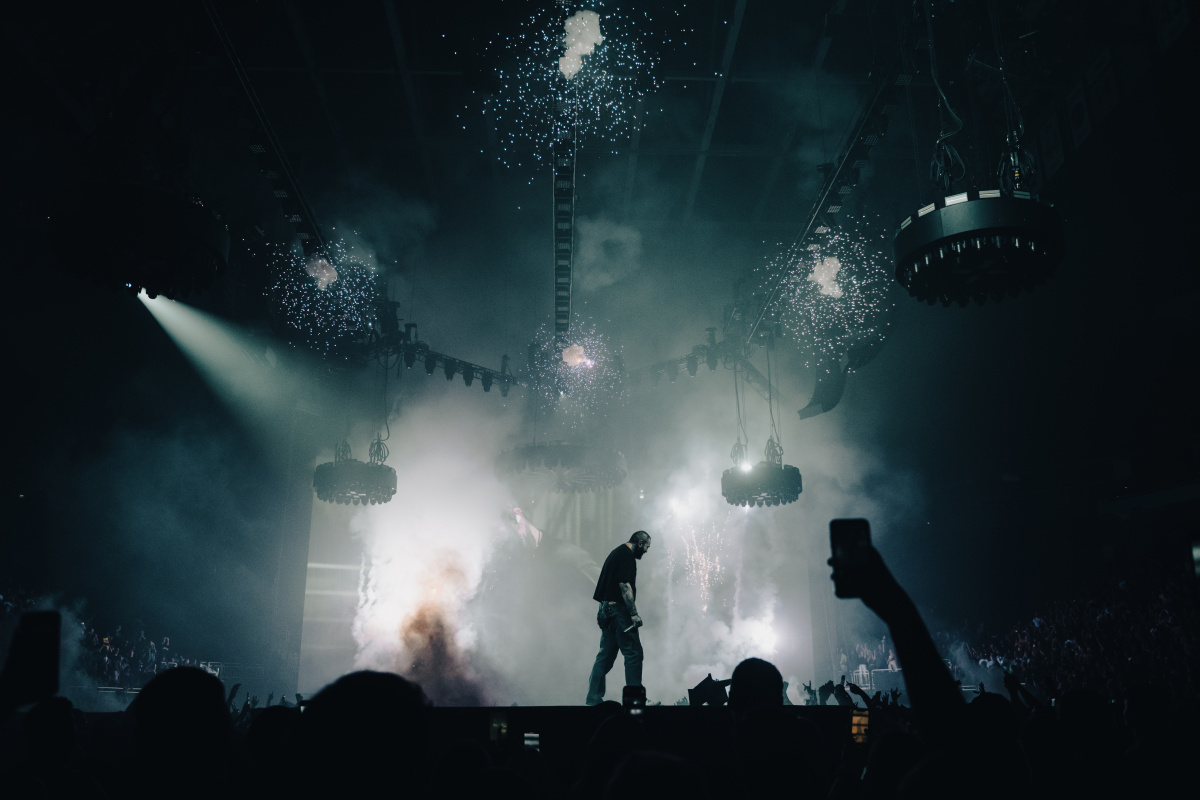
Post Malone’s The Twelve Carat Tour. Creative direction by Lewis James. Photo by Frankie Vergara
When you started working on the Drake tour what surprised you the most?
People seem to think tours are very glamorous environments where it’s all magical and pristine, but it’s not. It’s a very physically demanding job. There’s not really a timeframe on when you’re meant to work and when you’re not meant to. You’d be up all night before the show, 72 hours with no sleep, that sort of thing, battling what you want to do creatively with your ability to keep your eyes open. It’s quite fun, but it takes a certain kind of person to work in this this world.
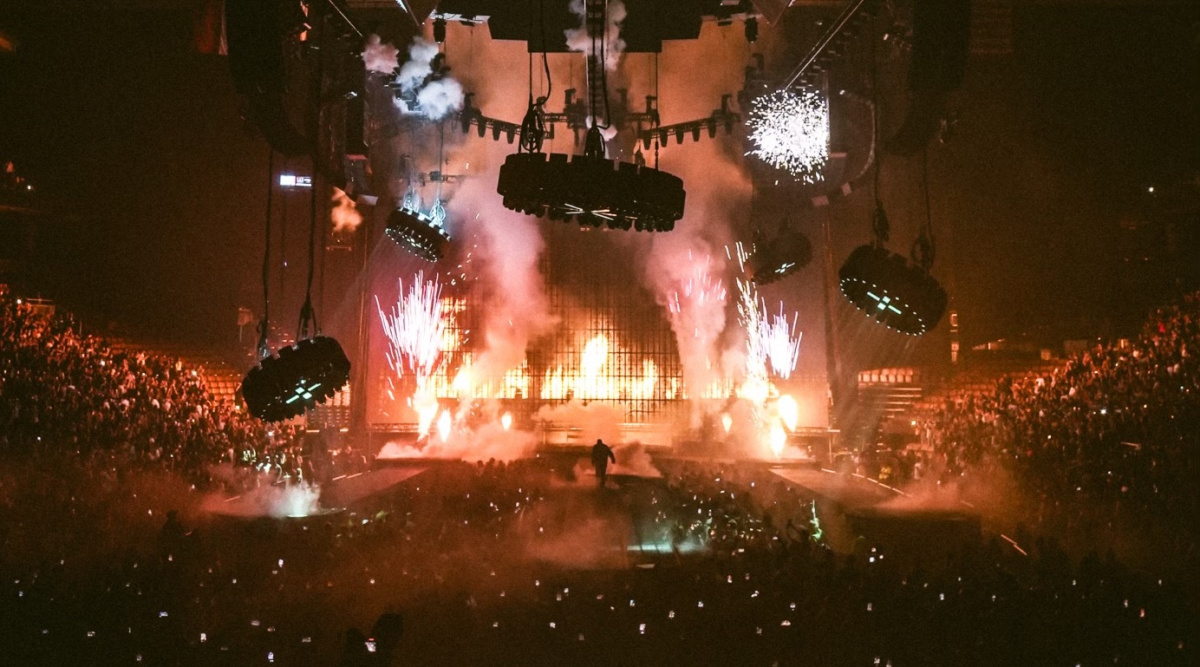
“There’s parts of the tour that are pretty and delicate and then there are parts where it’s quite dark and aggressive, like the Upside Down,” says Lewis James. Photo by Eric Cui
How far ahead of time do you start working on Post Malone’s The Twelve Carat Tour, and how did the process of designing it begin?
This tour started quietly. We had started a year earlier, but that tour was cancelled during Covid. By this tour there had been a ton of new music; it was quite challenging to fit all of those genres of music into one show.
I took all the concepts and feedback from the artist, and I start sketching. First, I really like to cram ideas onto a sketchpad and then develop those into three-dimensional drawings. I like to think more about the overall idea of the stage as opposed to the components that are going in it. The idea comes first, and sketching helps. My go-to tool is a 6B pencil and a sketch pad. That quickly develops into using 3D software like Vectorworks or Cinema 4D.
The concept with this tour was for it to feel like a welcome back party since the last tour got cancelled. It’s sort of this celebration where everyone gets a mini show, because there’s all these different, smaller podiums out in the arena. We really used the crowd as a sort of architecture to fill in gaps and make the stage feel very grand. But at the same time, there’s meaning to it; it’s not massive for no reason. There’s a lot of shows where there is a lot of a showing but not too much giving. We work in moments where the stage becomes really small or it becomes really big. There’s this play there with what we’re giving the audience. I would say that it’s quite generous.
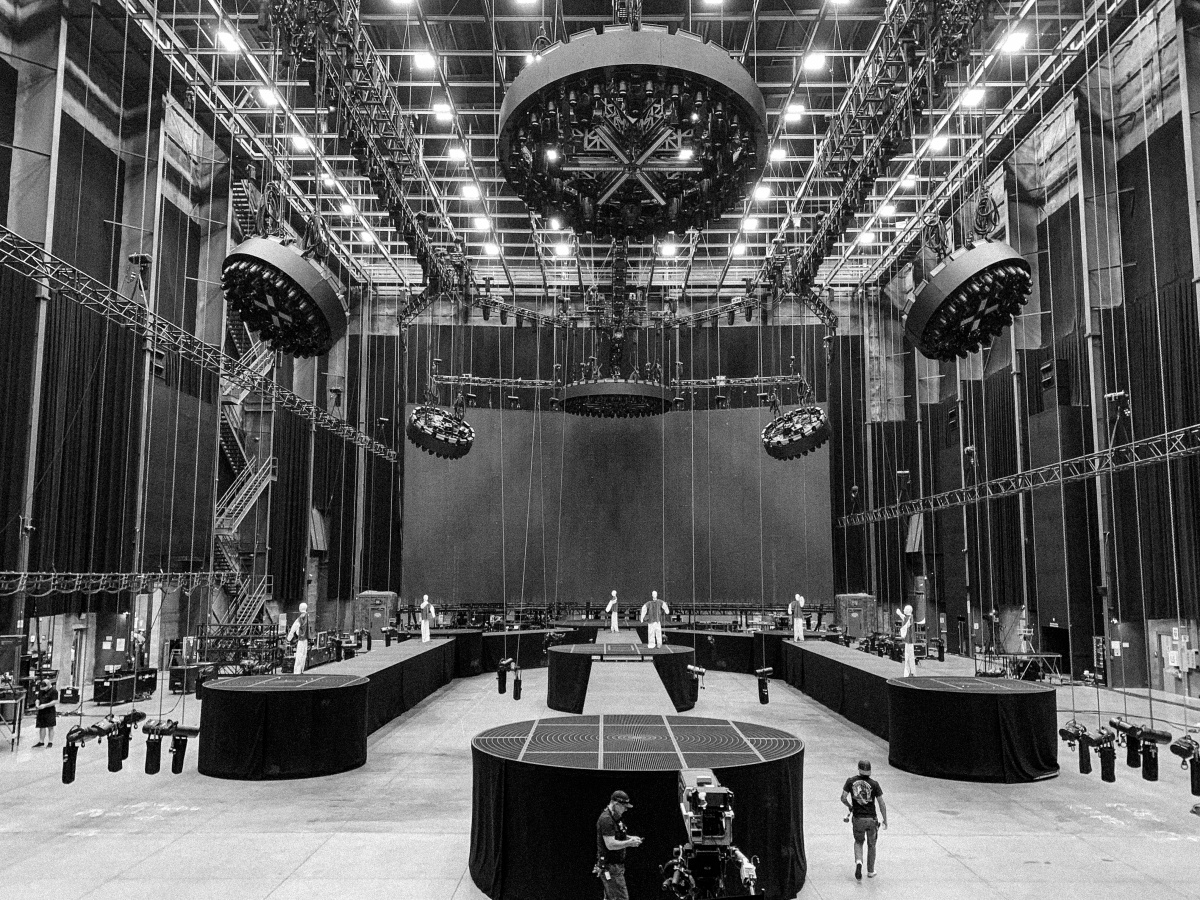
“It’s a really cool production park, basically a Google, but for touring,” says Lewis James of the production facility Rock Lititz. Photo courtesy Lewis James
You prepped the tour at Rock Lititz, the famous production facility in rural Pennsylvania. What was that like?
It’s wild. The people in the town nearby don’t know that all these superstars are coming through. It’s a really cool production park. Basically it’s like Google but for touring. You’ve got a bar, you’ve got bikes you can ride around on, there is a hotel onsite. Everything was contained there. We were there for 30 days, sort of locked in the box. I don’t think I left, maybe once or twice when it got a bit cabin fever-ish.
This was the stage setup there. We were first sort of testing out the automation of these pods and how they move and interact. We like to put mannequins on there because at the time Post wasn’t there. We used these mannequins that are made up of a T-shirt and a white hazmat suit thrown on a mic stand.
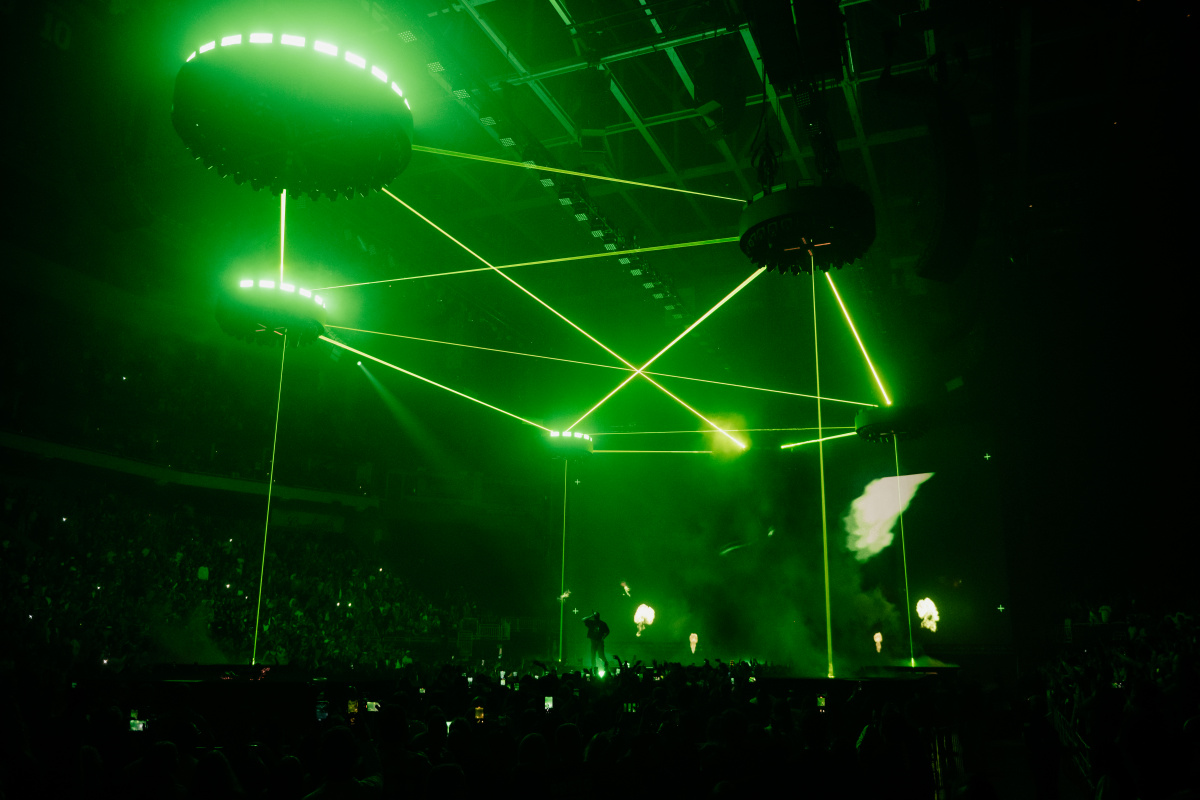
Custom designed lighting pods help create the architecture of Post Malone’s stage. Photo by Frankie Vergara
Was there a lot of back and forth with Post while you were designing this tour?
Every artist you work with is quite different. With Post, he’s very, very trusting. He enjoys most of the things we present. He loves to be involved with designing and scripting the show, sonically as well—obviously that’s a huge thing. We spent a long time developing the show sonically. There’s a lot of audio references in the show, like clever little Easter eggs. Like the guitar on the start of “Take What You Want” is actually the guitar for the start of a Black Sabbath song.
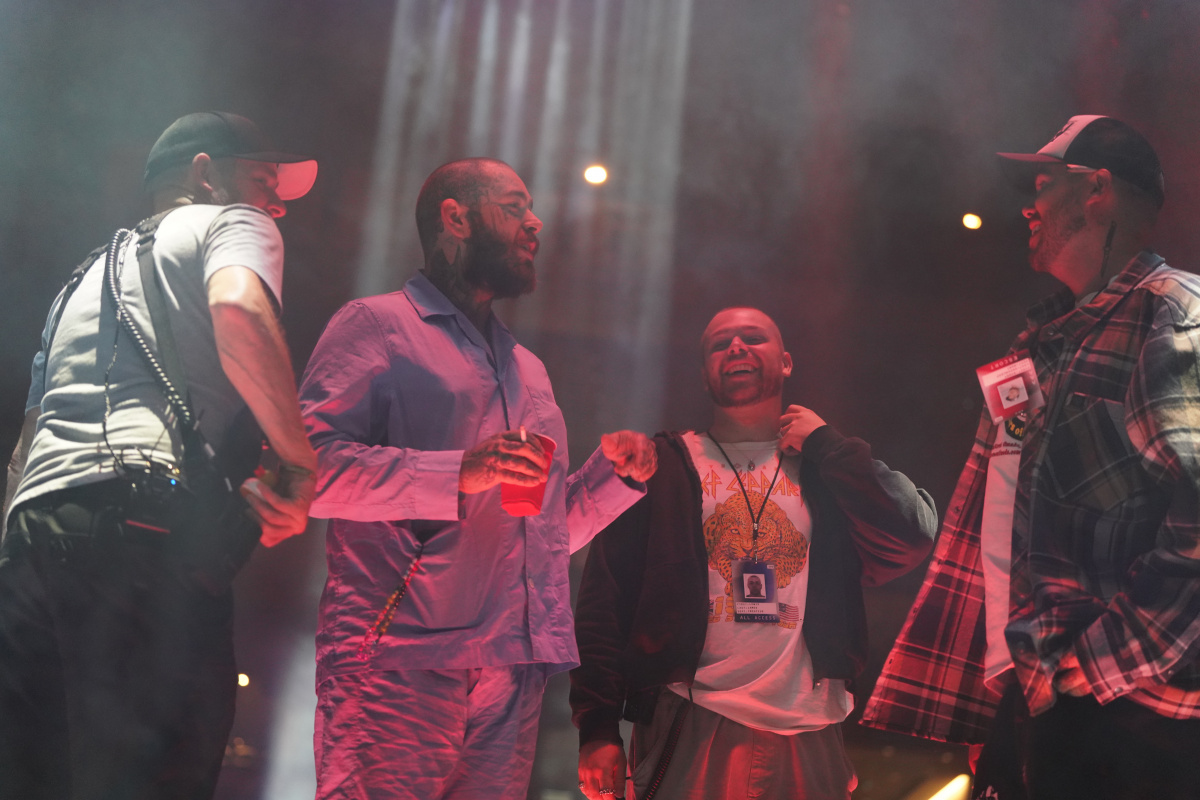
Post Malone and Lewis James on the set of The Twelve Carat Tour. Photo courtesy Lewis James
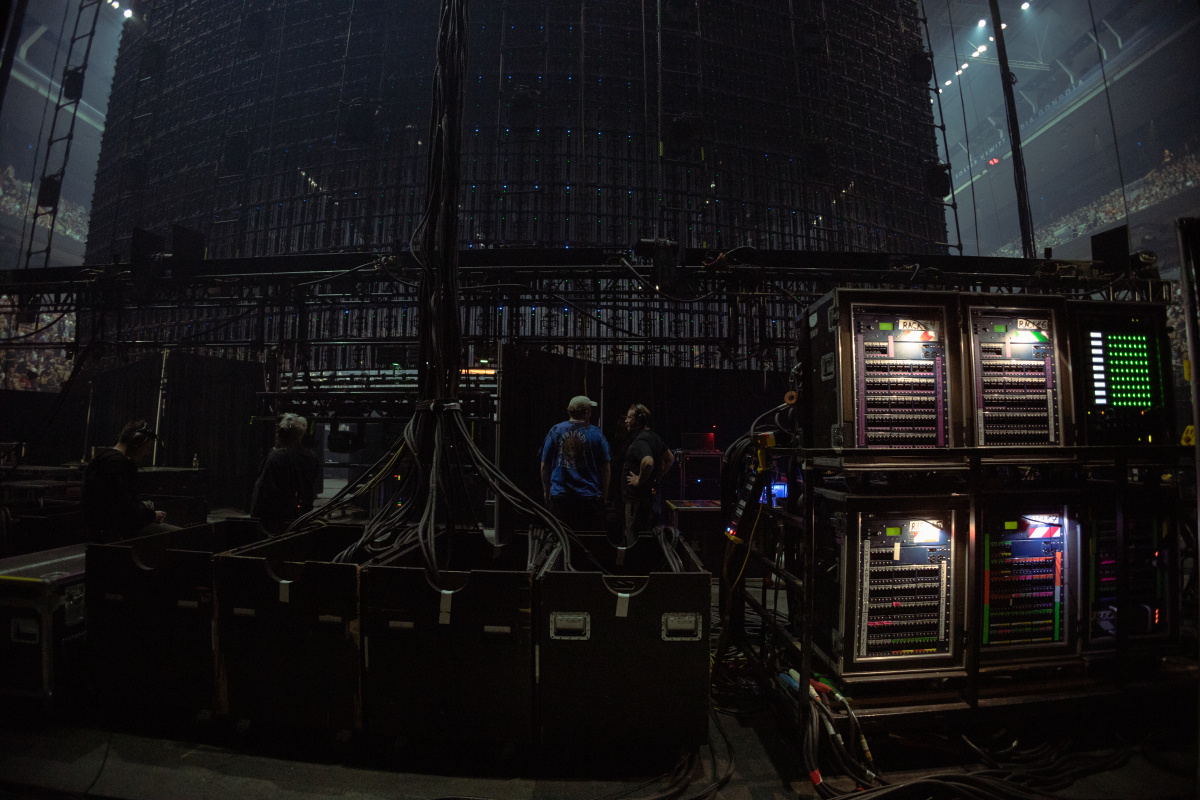
Backstage at Post Malone’s The Twelve Carat Tour. Photo courtesy Lewis James
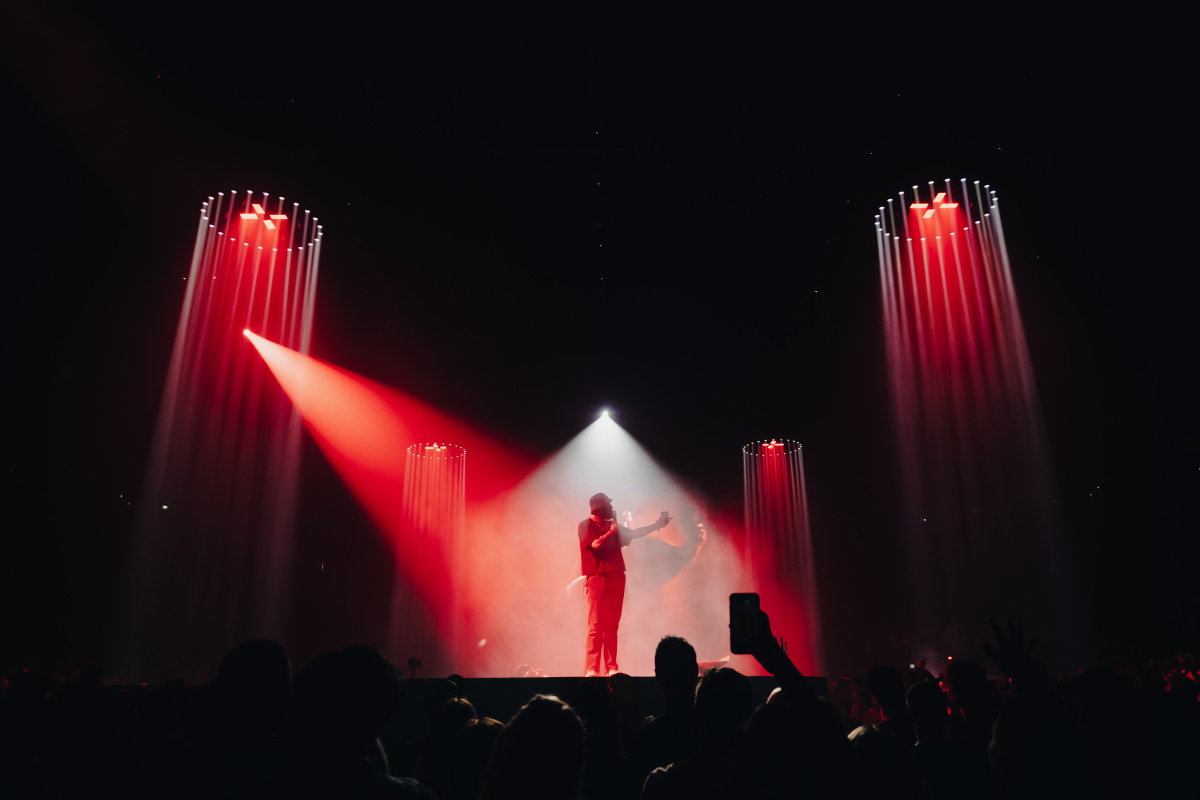
Photo by Frankie Vergara
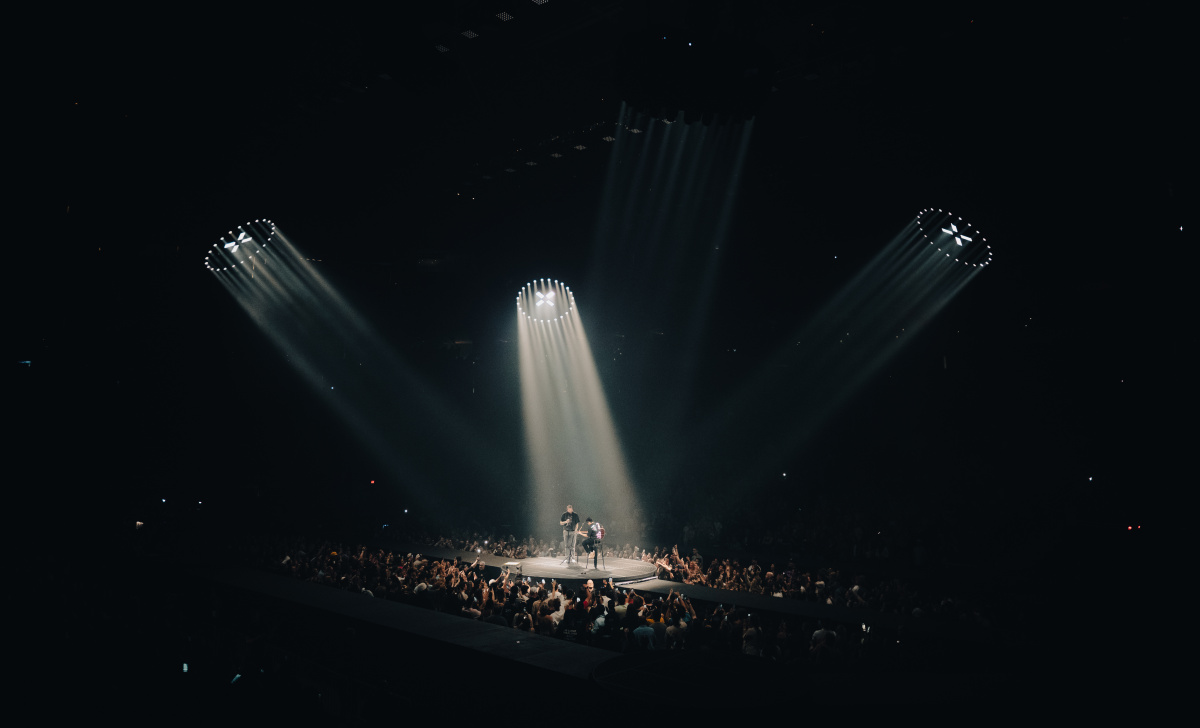
A fan on stage plays guitar while Post Malone performs “Stay.” Photo by Frankie Vergara.
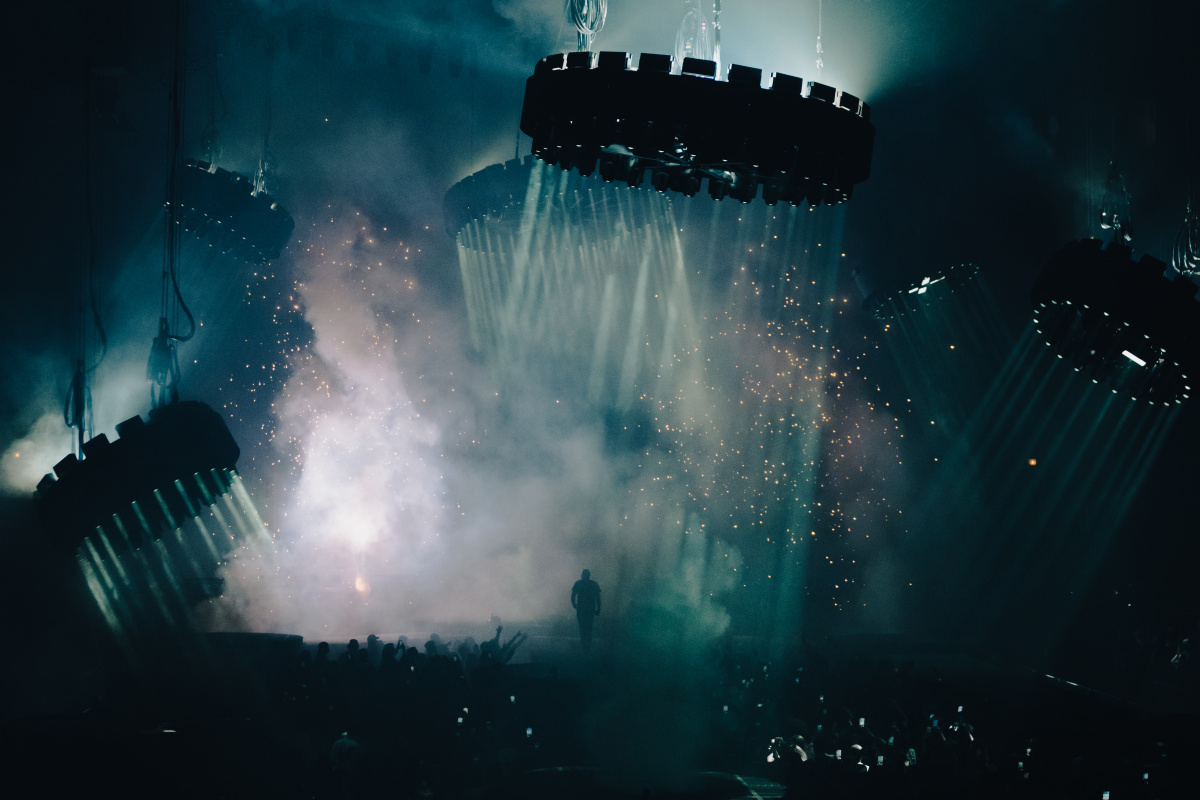
Photo by Frankie Vergara
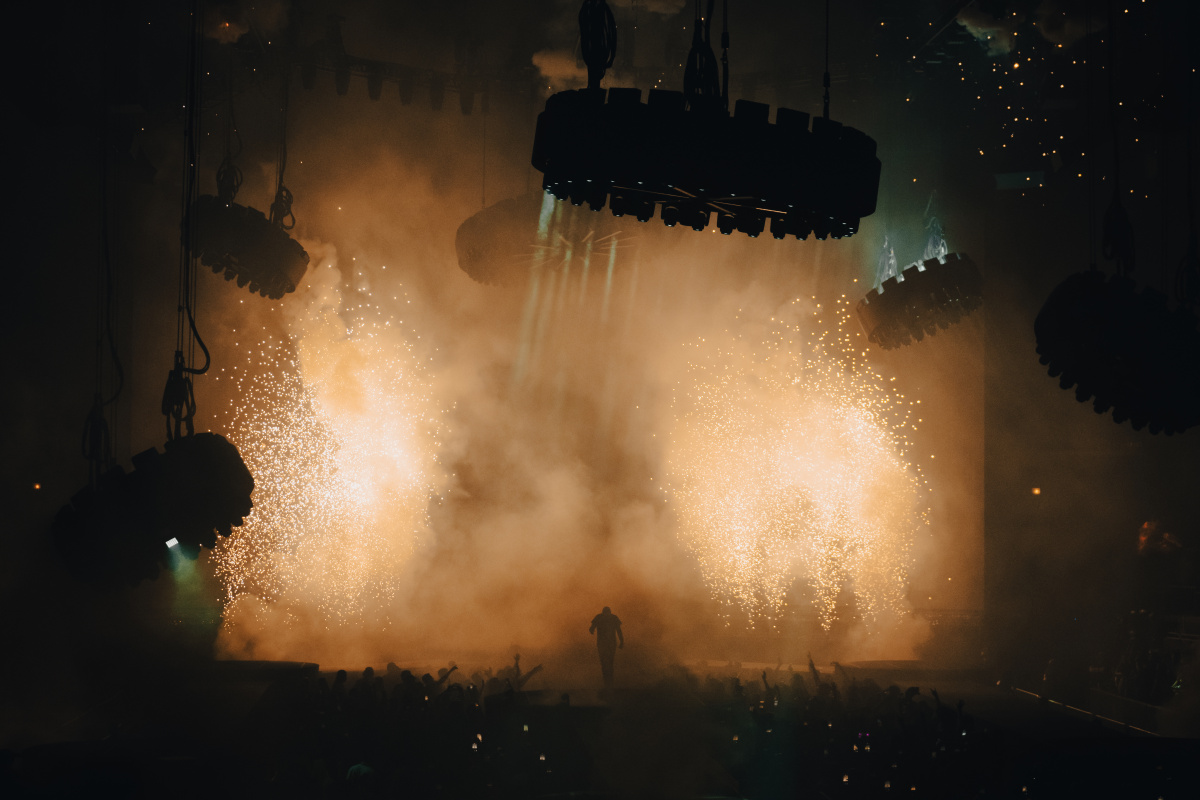
“There are certain songs that warrant the use of pyro. At the end of the day it’s a show, you have to give people excitement,” says Lewis James. Photo by Frankie Vergara
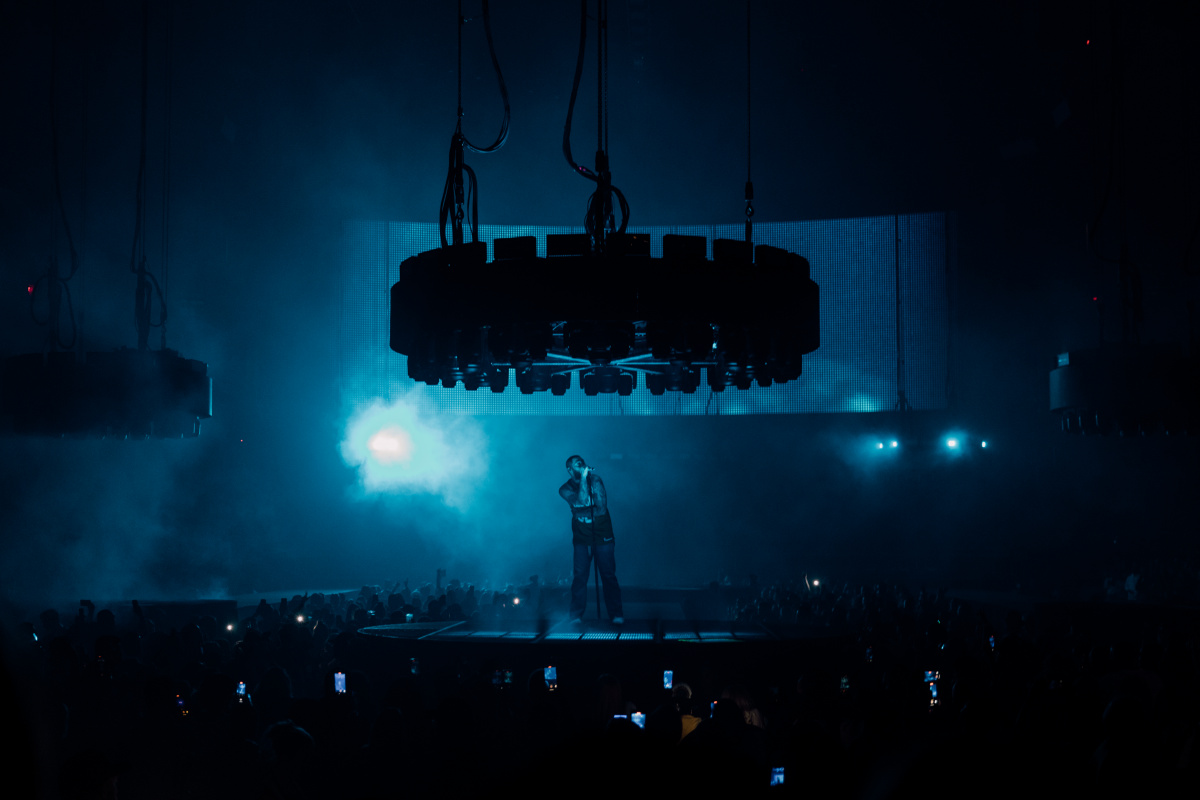
Photo by Drew C.
- An early sketch illustrating what would become the set for Post Malone’s The Twelve Carat Tour.
- “My go-to tool is a 6B pencil and a sketch pad,” says Lewis James.
The Twelve Carat Tour Credits
Creative Direction: Lewis James, Travis Brothers
Stage / Show Design: Lewis James
Lighting Design: Dan Norman
Video Design: Ryan Sheppard, Adam Fontana of Darkmatter Technology
Musical Direction: William Bowerman, James Trood of WFB Live
Production Manager: Dennis Daneels
